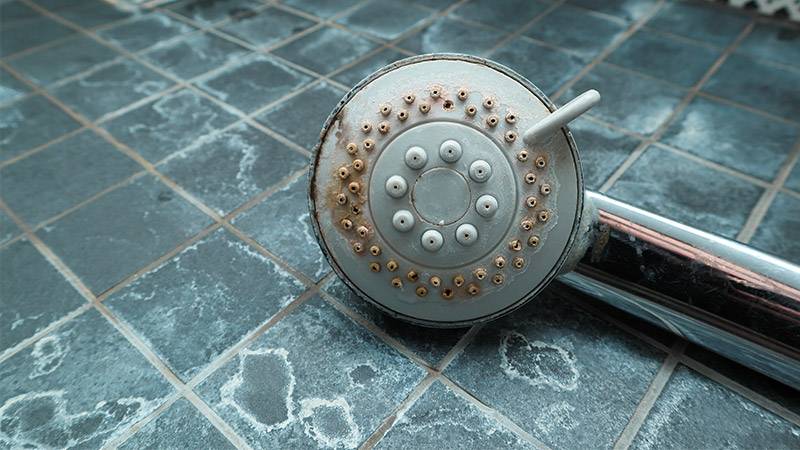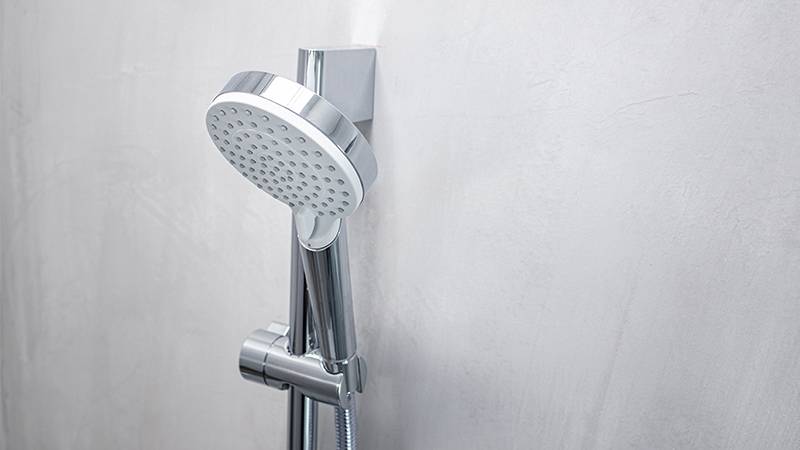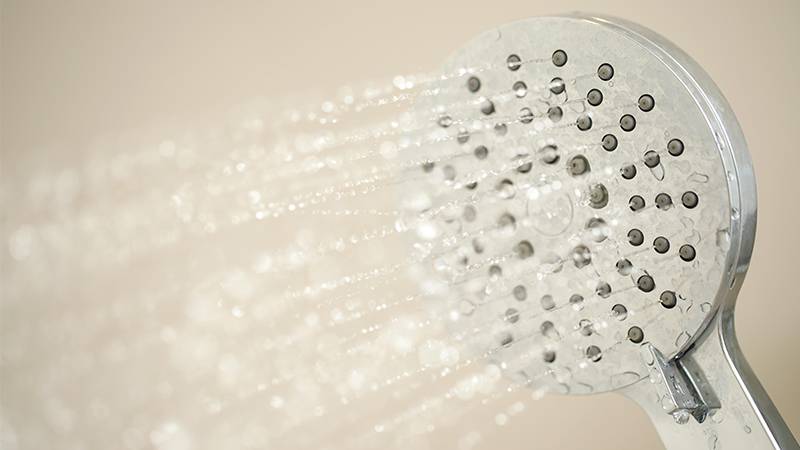Water conservation is more than a buzzword; it’s a necessary step towards sustainability and protecting our planet’s finite resources. With the average shower using nearly 2.1 gallons of water per minute, the impact on both the environment and our water bills is significant.
I remember the day I decided to switch to a low-flow showerhead. It wasn’t just about cutting costs—though the savings were a welcome bonus. It was about making a conscious choice to reduce my environmental footprint. This simple switch was a step towards a more sustainable lifestyle, and it’s a change any of us can make.
Step-by-Step Guide to Installing a Low-Flow Showerhead
Switching to a low-flow showerhead is not only a win for water conservation but also for your household’s water efficiency. Let’s dive into the straightforward process, ensuring you have all the necessary tools and knowledge for a seamless transition.
Tools and Materials Needed
- Adjustable wrench
- Teflon tape (plumber’s tape)
- Rag or towel
- New low-flow showerhead
Step 1: Removing the Old Showerhead
First, protect the finish of your shower arm by wrapping a rag around it.
Then, use the adjustable wrench to gently loosen and unscrew the old showerhead. If it’s been a while since it was last removed, you might need to apply a bit of extra force.
Remember, righty-tighty, lefty-loosey.
Step 2: Cleaning and Preparing the Threads
With the old showerhead off, take a moment to clean any residue or buildup off the threads of the shower arm. This step is crucial for ensuring a tight seal.
Once clean, wrap the threads with Teflon tape. This tape prevents leaks by filling in any gaps in the threads.
Wrap it clockwise, ensuring it’s snug but not overly tight.
Step 3: Installing the New Low-Flow Showerhead
Now, take your new low-flow showerhead and screw it onto the shower arm by hand.
Once it’s hand-tight, wrap the rag around the showerhead to protect its finish and use the wrench to tighten it just a bit more.
Avoid over-tightening, as this could damage the threads or the showerhead itself.
Tips for a Leak-Free Installation
- Double-check the Teflon tape application. It should cover all threads evenly.
- Tighten the showerhead securely, but don't overdo it. Over-tightening can lead to damaged threads and potential leaks.
- After installation, turn on the water to check for any leaks. If you notice a drip, try tightening the showerhead a little more or reapplying Teflon tape.
Maintenance and Troubleshooting

Maintaining your low-flow showerhead is key to ensuring it continues to conserve water effectively and works efficiently. Regular cleaning is essential to prevent clogs from mineral deposits, especially in areas with hard water.
Simply soaking the showerhead in vinegar overnight can dissolve buildup and restore flow.
Dealing with Common Issues
- Leaks: If you notice leaks, check if the showerhead is screwed on tightly. If the leak persists, reapply Teflon tape to secure a better seal.
- Reduced Flow: A sudden reduction in water flow usually indicates a clog. Remove the showerhead and clean the nozzles with a vinegar solution. For stubborn clogs, use a small brush to gently remove debris.
Choosing the Right Low-Flow Showerhead

Selecting the right low-flow showerhead is pivotal in maximizing water conservation while ensuring a satisfying shower experience.
Here are the key features to consider:
Key Features to Look For
- Flow Rate: Look for showerheads with a flow rate of 2.0 gallons per minute (GPM) or less. This rate strikes the perfect balance between water efficiency and adequate water pressure.
- Spray Pattern: A good low-flow showerhead offers various spray patterns, allowing customization for comfort and efficiency.
- Ease of Installation: Opt for models that can be easily installed without the need for professional help.
- Durability: Seek out showerheads made from high-quality materials to ensure longevity and performance.
Personal Recommendations
Based on my research, brands that often come highly recommended include those with WaterSense certifications. These products meet environmental agency criteria for efficiency and performance, ensuring they conserve water without sacrificing your shower experience.
The Importance of Reading Reviews and Product Certifications
Don’t just take my word for it; reading customer reviews can provide real-world insights into the performance and reliability of different low-flow showerheads. Additionally, look for WaterSense labels or other product certifications. These labels are a testament to the product’s water efficiency and environmental impact, offering peace of mind that you’re making a responsible choice.

Read More:
Understanding Low-Flow Showerheads

Low-flow showerheads are designed to use less water than traditional models without compromising on the quality of your showering experience. By optimizing the flow rate—usually 2.0 gallons per minute (GPM) or less—these showerheads significantly reduce water usage.
The Technology Behind Low-Flow Showerheads
Innovative engineering allows low-flow showerheads to achieve water efficiency. They often incorporate air into the water stream or employ specialized nozzles that increase water velocity, thereby reducing the amount of water needed while still providing a satisfying and refreshing shower.
This technology not only conserves water but also reduces the demand on water heaters, saving energy.
Contributing to Water Conservation
The adoption of low-flow showerheads plays a crucial role in water conservation efforts. By significantly lowering the volume of water used during showers, they reduce the overall household water consumption.
This not only saves a vital environmental resource but also contributes to lowering utility bills.
Furthermore, when scaled across communities, the impact on water conservation is substantial, helping to address water scarcity challenges and promoting a more sustainable and environmentally friendly lifestyle.
Benefits of Switching to a Low-Flow Showerhead

Adopting a low-flow showerhead is a simple yet impactful change that offers a multitude of benefits, from environmental conservation to economic savings, and even personal satisfaction from contributing to a larger cause.
Environmental Impact
Switching to a low-flow showerhead can save thousands of gallons of water annually.
For example, reducing the flow rate from the standard 2.5 gallons per minute (GPM) to 2.0 GPM or less can save up to 20% of water usage per shower.
Over a year, this can amount to more than 2,700 gallons of water saved for an average family.
This significant reduction in water usage not only conserves precious freshwater resources but also reduces the energy consumed for heating water, thereby decreasing greenhouse gas emissions.
By adopting low-flow showerheads, individuals can make a tangible contribution to reducing their environmental footprint.
Economic Benefits
The economic advantages of installing a low-flow showerhead are equally compelling.
The reduction in water usage directly translates to lower water bills, offering substantial savings over time.
Additionally, many utilities offer rebates and incentives for households that choose water-efficient fixtures, further reducing the initial investment cost.
These financial savings, combined with the long-term durability of modern low-flow showerheads, make them a cost-effective choice for eco-conscious consumers.
Personal Experience Benefits
Many users report that low-flow showerheads provide a better perception of water pressure compared to their traditional counterparts.
Thanks to advanced technology, these showerheads are designed to maximize the force of water flow, ensuring that conserving water does not come at the expense of a satisfying shower experience.
Beyond the immediate benefits of water and energy savings, making the switch to a low-flow showerhead allows individuals to contribute to a larger environmental cause.
Knowing that every shower taken is part of a collective effort to conserve water and protect the planet can provide a profound sense of personal fulfillment and responsibility towards sustainability.
Conclusion
Switching to a low-flow showerhead is a straightforward yet powerful step towards water conservation, offering substantial environmental benefits, economic savings, and a more efficient shower experience. By embracing this change, we not only reduce our water and energy consumption but also contribute to a larger, global effort to protect our planet.
I encourage you to take this step towards sustainability and consider other ways to conserve water in your daily life. Let’s work together to make a difference, one shower at a time. Remember, every drop saved is a step towards a more sustainable future.

